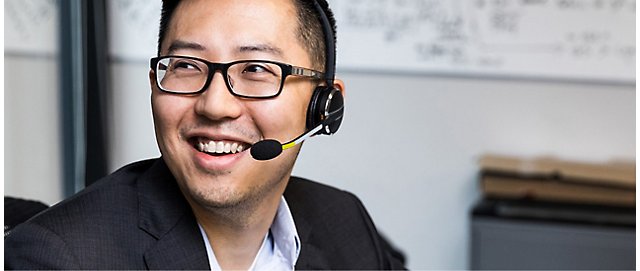When storm front “Bernd” swept over Germany in summer 2021, it didn’t just leave flooding and toppled trees in its wake; it also damaged countless buildings and temporarily forced thousands of people out of their homes. To make sure it could receive claims as quickly as possible and provide rapid assistance, insurance specialist DOMCURA decided to introduce a chatbot. Its name: Claimens. Its technology basis: Azure Cognitive Services.


The challenge: Competently record claims around the clock
Damage to buildings is almost always unforeseen: a tree might fall and damage a roof during a storm, or a cellar might fill up with water during a flood. In most cases, insurance companies are on hand to help, but first they need to be notified. “Our customers rely on us to be available at all hours, day or night, to competently record their claims,” says Lars Malinowsky, Head of IT Service at DOMCURA.
The first port of call tends to be the insurer’s hotline, where a call center agent will collect general information on the damage. The customer then completes a claim form, which is used to open a damage case, request missing documentation, and ultimately handle the claim. To simplify this process while also improving its service, DOMCURA enlisted the help of a bot called Claimens. And, true to his name, the chatbot has been helping customers fill out the claim form for around three years now—completely virtually and around the clock over the company’s website. There was just one thing he hadn’t yet quite managed to do: speak. Now it was time for him to learn.
“At DOMCURA, we strive to make all our processes better, smoother, and faster by drawing on new technologies,” Malinowsky says. “There’s a huge amount of potential here in the interaction with customers. So we thought, what if Claimens were able to understand and respond to more than just the written word—what if customers could actually speak to him?” At first, Malinowsky and his team tested simple voice control programming on their monitors. But it quickly became clear that they were going to need a professional solution. “Our IT architecture already features a lot of Microsoft technologies such as Microsoft Teams, Power BI, and Microsoft Azure,” Malinowsky says. “Our chatbot version of Claimens had already been built based on Azure Cognitive Services. This made Microsoft the obvious call when it came to choosing a technology partner.” The only thing missing was a suitable platform that would allow Azure Cognitive Services to also be integrated into the insurer’s telephony service. With its eponymous platform, the company Parloa specializes in precisely this area. In one fell swoop, DOMCURA had found both the partner and the platform that would enable it to create its very own phonebot.
The solution: Syllables, words, and sentences based on low-code building blocks
“Our original plan was to limit Claimens’s voicebot functionality to the area of storm damage,” says Jonas Brock, IT Service Assistant at DOMCURA. “But we soon saw that this would be counterproductive, hence our decision to ultimately expand the project to all types of damage and classes of insurance.” Together with the rest of the team, Malinowsky and Brock collaborated with both the specialist departments and the call center agents to prepare guidelines for all these conversations. “This was a real challenge. Never before had we looked at the technical requirements of the different specialist areas in so much detail,” Brock says. “This also prompted discussions as to whether certain information was really necessary or if it could simply be omitted. By the end of the project, we had optimized not just the guidelines, but also entire processes. Customers now have to answer far fewer questions than in the past.”

At the moment, Claimens’s tasks include taking some calls, identifying callers, guiding them through the claim form, recording details of the claim, providing assistance, notifying the caller of specific documents that have to be submitted, outlining next steps, and explaining how the case workers will go on to process the claim. Claimens’s questions are always relevant and lead on from the responses provided by the caller. In certain situations, Claimens recognizes the wider context and also recommends service providers. “But what we’re especially proud of is our policy number recognition feature—this number allows us to attribute an insurance policy, with all the relevant details, to a particular customer,” Malinowsky says. “There are around 40 different templates here, which translate into approximately 80,000 policy numbers. A good data corpus for training Claimens.”
Claimens’s presence has certainly been felt in the call center. By assuming simple tasks, he gives his human counterparts more time to concentrate on more complicated claims. “Customers can stop interacting with the bot at any time to avoid frustration,” Malinowsky says. “At the very latest, if Claimens has misunderstood something twice during a call, the caller is automatically put through to our customer service center.” What’s more, for every call Claimens takes, data is collected and pooled via Power BI and feedback is actively obtained from customers in order to continuously improve the service.
“By switching to Parloa’s platform solution, we, as a medium-sized business, are able to meet global standards, use cutting-edge technology, and perform like a multinational corporation.”
Uwe Schumacher, CEO, DOMCURA AG
Explore related stories
Fuel innovation with Microsoft

Talk to an expert about custom solutions








Follow Microsoft